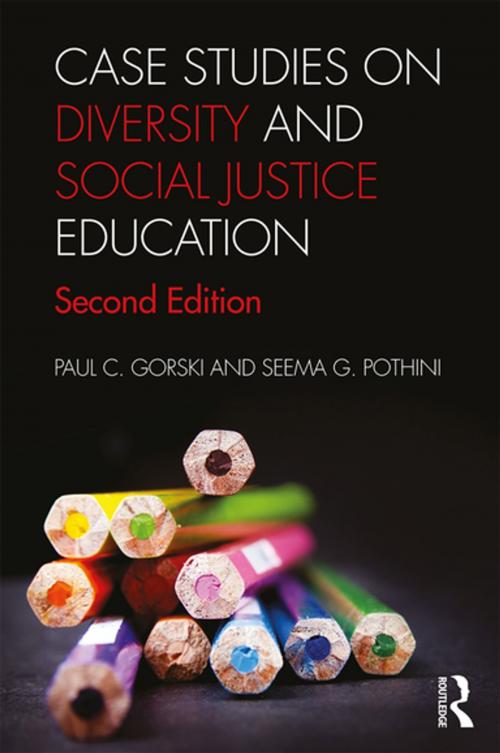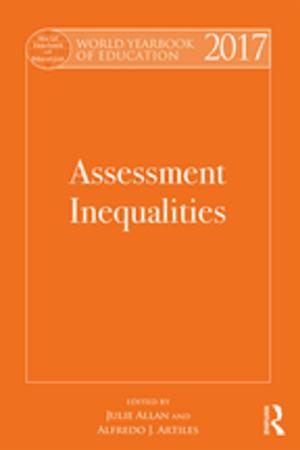Case Studies on Diversity and Social Justice Education
Nonfiction, Reference & Language, Education & Teaching| Author: | Paul C. Gorski, Seema G. Pothini | ISBN: | 9781351142502 |
| Publisher: | Taylor and Francis | Publication: | February 21, 2018 |
| Imprint: | Routledge | Language: | English |
| Author: | Paul C. Gorski, Seema G. Pothini |
| ISBN: | 9781351142502 |
| Publisher: | Taylor and Francis |
| Publication: | February 21, 2018 |
| Imprint: | Routledge |
| Language: | English |
Case Studies on Diversity and Social Justice Education offers pre- and in-service educators an opportunity to analyze and reflect upon a variety of realistic case studies related to educational equity and social justice. The accessibly written cases allow educators to practice the process of considering a range of contextual factors, checking their own biases, and making immediate- and longer-term decisions about how to create and sustain equitable learning environments for all students. This revised edition adds ten new cases to offer greater coverage of elementary education, as well as topics such as body-shaming, Black Lives Matter, and transgender oppression. Existing cases have been updated to reflect new societal contexts, and streamlined for ease-of-use.
The book begins with a seven-point process for examining case studies. Largely lacking from existing case study collections, this framework guides readers through the process of identifying, examining, reflecting on, and taking concrete steps to resolve challenges related to diversity and equity in schools. The cases themselves present everyday examples of the ways in which racism, sexism, homophobia and heterosexism, class inequities, language bias, religious-based oppression, and other equity and diversity concerns affect students, teachers, families, and other members of our school communities. They involve classroom issues that are relevant to all grade levels and content areas, allowing significant flexibility in how and with whom they are used. Although organized topically, the intersections of these issues are stressed throughout the cases, reflecting the complexities of real-life scenarios. All cases conclude with a series of questions to guide discussion and a section of facilitator notes, called ‘Points for Consideration.’ This unique feature provides valuable insight for understanding the complexities of each case.
Case Studies on Diversity and Social Justice Education offers pre- and in-service educators an opportunity to analyze and reflect upon a variety of realistic case studies related to educational equity and social justice. The accessibly written cases allow educators to practice the process of considering a range of contextual factors, checking their own biases, and making immediate- and longer-term decisions about how to create and sustain equitable learning environments for all students. This revised edition adds ten new cases to offer greater coverage of elementary education, as well as topics such as body-shaming, Black Lives Matter, and transgender oppression. Existing cases have been updated to reflect new societal contexts, and streamlined for ease-of-use.
The book begins with a seven-point process for examining case studies. Largely lacking from existing case study collections, this framework guides readers through the process of identifying, examining, reflecting on, and taking concrete steps to resolve challenges related to diversity and equity in schools. The cases themselves present everyday examples of the ways in which racism, sexism, homophobia and heterosexism, class inequities, language bias, religious-based oppression, and other equity and diversity concerns affect students, teachers, families, and other members of our school communities. They involve classroom issues that are relevant to all grade levels and content areas, allowing significant flexibility in how and with whom they are used. Although organized topically, the intersections of these issues are stressed throughout the cases, reflecting the complexities of real-life scenarios. All cases conclude with a series of questions to guide discussion and a section of facilitator notes, called ‘Points for Consideration.’ This unique feature provides valuable insight for understanding the complexities of each case.















